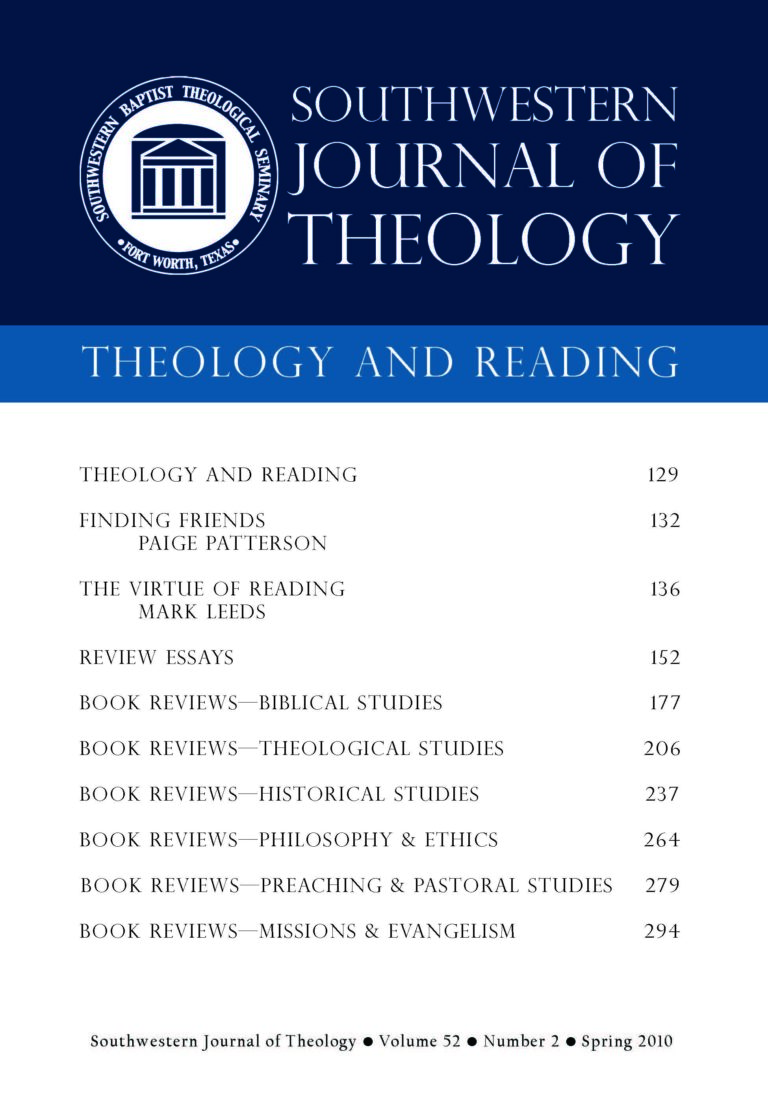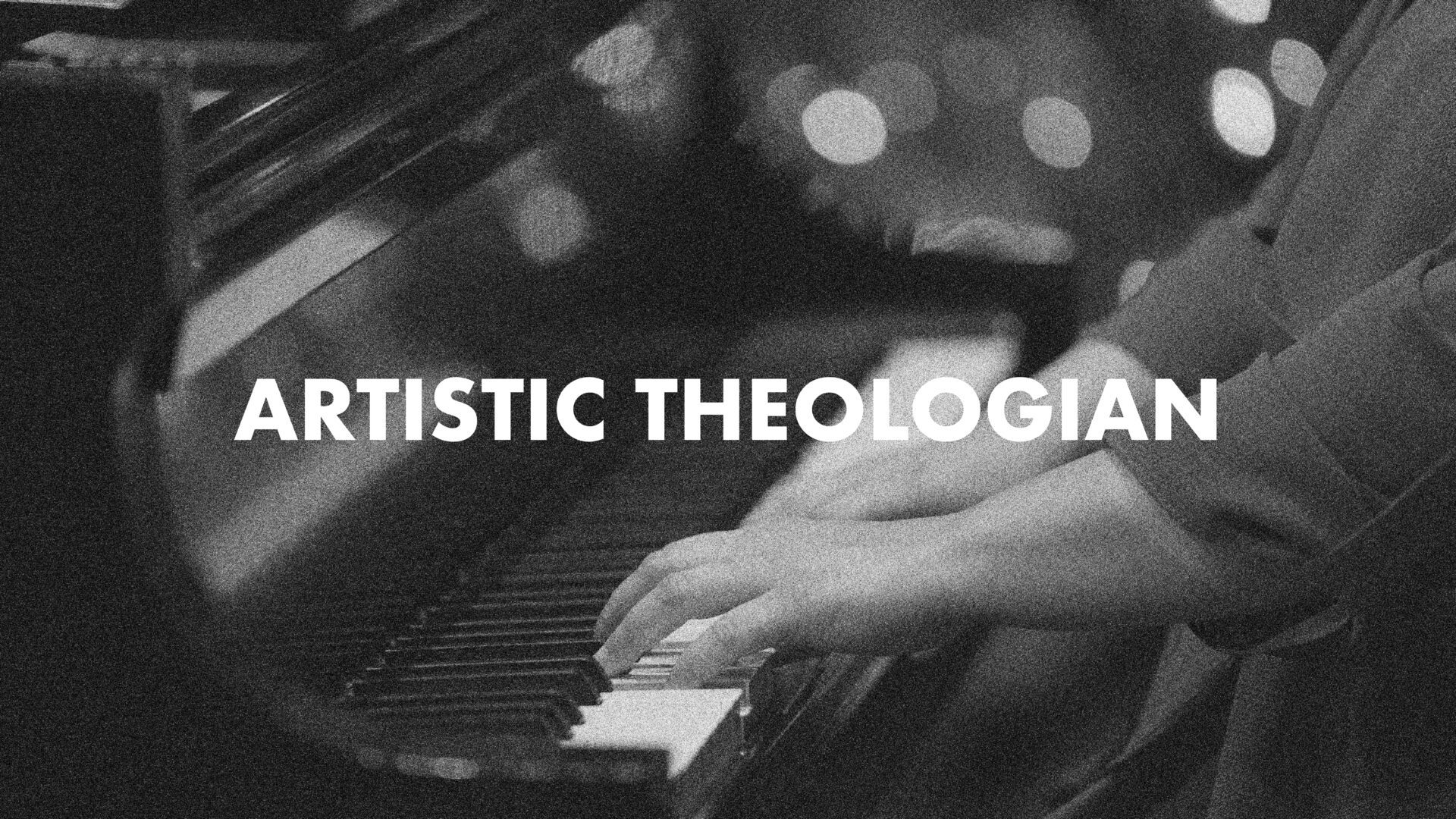
Theology and Reading
Southwestern Journal of Theology
Volume 52, No. 2 – Spring 2010
Managing Editor: Malcolm B. Yarnell III
By Thomas J. Davis. Grand Rapids: Baker Academic, 2008. 203 pages. Softcover, $26.00.
In This is My Body Thomas J. Davis sketches the Eucharistic features of the Reformation through an investigation of Calvin, Luther, and, to a lesser extent, Zwingli. The book is a collection of historical-theological presentations, essays, and articles written by the author over a span of sixteen years (1992–2008). Davis seeks to outline Calvin and Luther’s answer to several questions, namely, “How do we know Christ? How does God save through Christ? How is God present in Christ?” (14–15). The author states that the book “explores and analyzes ways in which Luther and Calvin understood the issue of Christ’s presence (and all that entails and implies)” (15).
This Is My Body contains ten chapters. Broadly speaking, the first two examine the centrality of God’s Word and Luther’s Pre-Marburg preaching on the Supper (1521–1528), respectively. Chapters 3 through 8 focus on Calvin’s theology of Christ’s presence. Here Davis elucidates important features of Calvin’s theology of Word and sacrament (ch. 3), the role of “body” in Calvin’s soteriology (ch. 4), the way preaching overcomes human weakness to make Christ present (chs. 5–6), the implications of the ascension (ch. 7), and the role of biblical interpretation in Calvin’s theological method (ch. 8). The final two chapters look at issues of language. Chapter 9 compares and contrasts Luther, Zwingli, and Calvin’s takes on the call to “discern the body” in 1 Corinthians 11. Chapter 10 explores how a cultural shift to diminish the distance between the sign and the signified (i.e., within Renaissance art) may serve to explain the move toward literal/singular interpretive tendencies of the reformers.
The work has much to commend it. First, Davis admirably handles one of the difficulties of a compilation work, namely, maintaining a sense of cohesion and flow of thought throughout. All but three of the chapters (chs. 6–8) have appeared previously in journals of essay collections and, thus, each has a stand-alone quality about it. Nonetheless, the sequencing of the chapters is logical and Davis ably highlights and coordinates points of contact between various parts via the use of notes. Second, the author offers helpful methodological comments to guide scholars researching Calvin. For example, Davis repeatedly warns the reader not to allow his or her research to generalize Calvin’s thought from a mere examination of the Institutes (even in its progressing editions) but rather to cross-examine him via his commentaries and sermons to ensure that finer points are consistently interpreted and nuanced. Davis models this approach throughout, but chapters 5, 7, and 9 offer the clearest examples of this methodological principle. Finally, Davis ably uses his footnotes to add deeper scholarly insight while maintaining his thought flow in the main body (e.g., 86n3).
Readers may find some aspects of the book less helpful. While containing an index, the work lacks a comprehensive bibliography. Further, though subtitled “The Presence of Christ in Reformation Thought” (emphasis mine), the scope of the work is limited almost exclusively to Luther and Calvin with a decided emphasis upon the latter. Indeed, 7 out of 10 chapters are focused on Calvin. Davis’ cursory attention to Zwingli (and consequently the Anabaptist eucharistic tradition) is also striking. Davis’ background in Calvin studies and his conclusion that Calvin rested closer to Luther than to Zwingli on the issue of the Eucharist may explain the imbalanced emphases. These last observations may also explain why Davis omits an extended discussion of the definitive debate between Luther and Zwingli at Marburg . However, given his stated intention to examine “Luther and Calvin’s” thought, the absence of a discussion on the Finnish interpretation of Luther (a burgeoning scholarly discussion on Luther’s understanding of Christ’s presence) is less explicable. Consequently, the book’s principal contribution is made in the arena of Calvin studies.
The noted limitations of the work fail to undermine its overall value. Davis succeeds in offering a nuanced look at important aspects of Calvin’s answers to how one knows, is saved by, and is united with Christ and relates these observations at key points to the thought of Luther and Zwingli. On the one hand, less seasoned readers in the area of Reformation studies will find that This Is My Body bears an accessible quality often absent in historical-theological works of its caliber. On the other hand, the copious footnoting of sources, interaction with original language works, and substantive content notes will aid scholars in delving more deeply into both primary and secondary literature. For the classroom setting, it is believed that this text, though accessible on other levels, would best serve graduate level or upper level undergraduate classes intersecting Reformation theology, especially that of Calvin.





